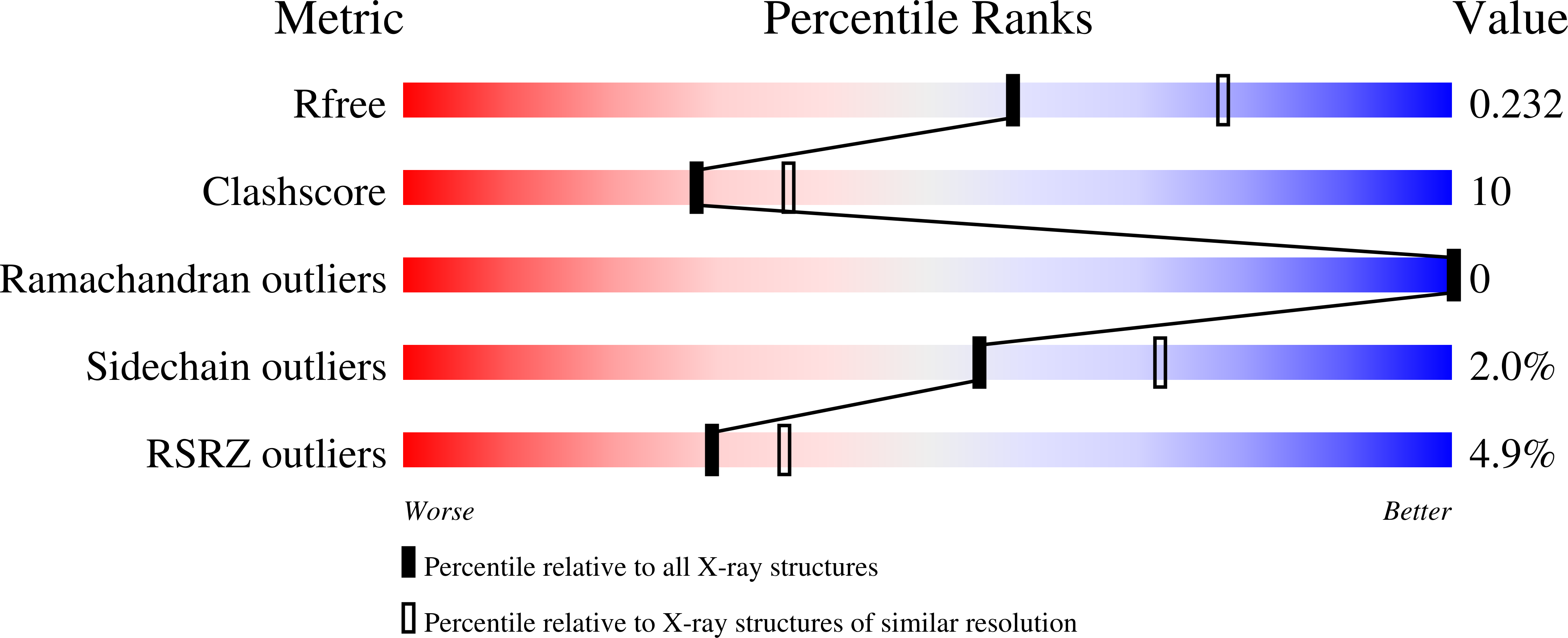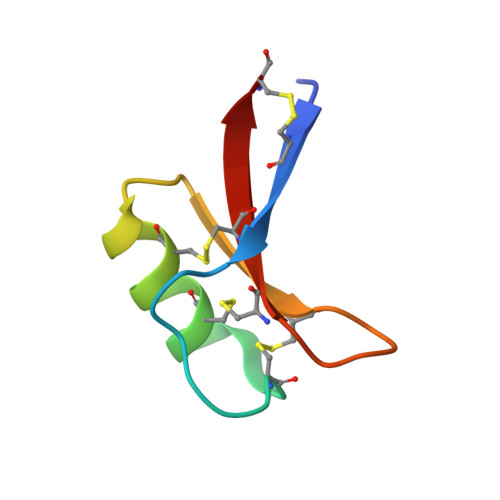Structural and functional characterization of the membrane-permeabilizing activity ofNicotiana occidentalisdefensin NoD173 and protein engineering to enhance oncolysis.
Lay, F.T., Ryan, G.F., Caria, S., Phan, T.K., Veneer, P.K., White, J.A., Kvansakul, M., Hulett, M.D.(2019) FASEB J 33: 6470-6482
- PubMed: 30794440
- DOI: https://doi.org/10.1096/fj.201802540R
- Primary Citation of Related Structures:
6MRY - PubMed Abstract:
Defensins are an extensive family of host defense peptides found ubiquitously across plant and animal species. In addition to protecting against infection by pathogenic microorganisms, some defensins are selectively cytotoxic toward tumor cells. As such, defensins have attracted interest as potential antimicrobial and anticancer therapeutics. The mechanism of defensin action against microbes and tumor cells appears to be conserved and involves the targeting and disruption of cellular membranes. This has been best defined for plant defensins, which upon binding specific phospholipids, such as phosphatidylinositol 4,5-bisphosphate (PIP2) and phosphatidic acid, form defensin-lipid oligomeric complexes that destabilize membranes, leading to cell lysis. In this study, to further define the anticancer and therapeutic properties of plant defensins, we have characterized a novel plant defensin, Nicotiana occidentalis defensin 173 (NoD173), from N. occidentalis. NoD173 at low micromolar concentrations selectively killed a panel of tumor cell lines over normal primary cells. To improve the anticancer activity of NoD173, we explored increasing cationicity by mutation, with NoD173 with the substitution of Q22 with lysine [NoD173(Q22K)], increasing the antitumor cell activity by 2-fold. NoD173 and the NoD173(Q22K) mutant exhibited only low levels of hemolytic activity, and both maintained activity against tumor cells in serum. The ability of NoD173 to inhibit solid tumor growth in vivo was tested in a mouse B16-F1 model, whereby injection of NoD173 into established subcutaneous tumors significantly inhibited tumor growth. Finally, we showed that NoD173 specifically targets PIP2 and determined by X-ray crystallography that a high-resolution structure of NoD173, which forms a conserved family-defining cysteine-stabilized-¦Á¦Â motif with a dimeric lipid-binding conformation, configured into an arch-shaped oligomer of 4 dimers. These data provide insights into the mechanism of how defensins target membranes to kill tumor cells and provide proof of concept that defensins are able to inhibit tumor growth in vivo .-Lay, F. T., Ryan, G. F., Caria, S., Phan, T. K., Veneer, P. K., White, J. A., Kvansakul, M., Hulett M. D. Structural and functional characterization of the membrane-permeabilizing activity of Nicotiana occidentalis defensin NoD173 and protein engineering to enhance oncolysis.
Organizational Affiliation:
Department of Biochemistry and Genetics, La Trobe Institute for Molecular Science, La Trobe University, Melbourne, Victoria, Australia.




















